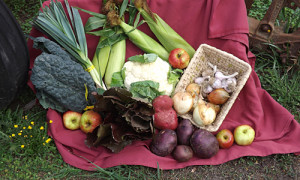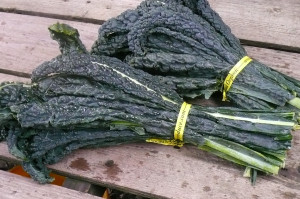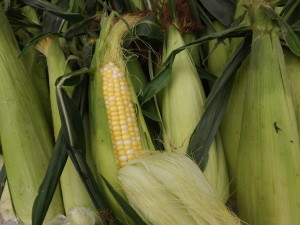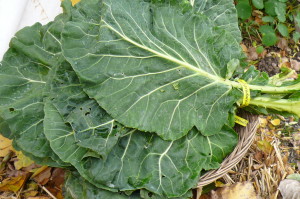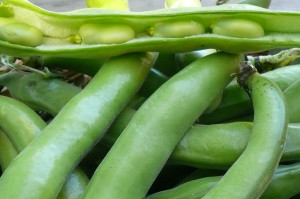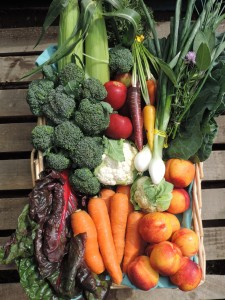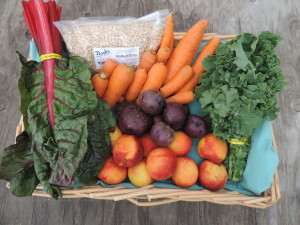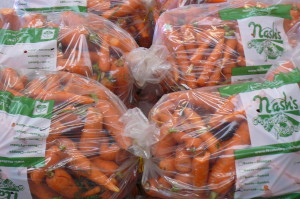Standard Box
Lacinato Kale, 1 bu
Purple-Skinned Potatoes, 2.5 lbs
Bulk Onions, 1.5 lbs
Corn, 4
Garlic, .5 lb
Apples, 1.5 lbs
Lettuce, 1 hd
Baby Leeks, 1 bu
Cauliflower, approx. 2 lbs
Small Box
Carrots, Nash’s Best, 5-lb bag
Corn, 4
Bulk Onions, 2 lbs
Curly Parsley, 1 bu
Fava Beans, 1.25 lbs
Lettuce, 1 hd
Lacinato Kale
Lacinato kale’s bumpy texture gives it the name “dinosaur kale.” Its taste is described as slightly sweeter and more delicate than curly kale.
Like other kale varieties, Lacinato can be blanched, steamed, sautéed, or added to soups, sauces and casseroles. The stems are tender and edible too, so be sure to include them in your dish, or if you prefer, strip the greens from the stems and save the stems for your juicer or stock pot.
In Tuscan cuisine, Lacinato kale is often used in Ribollita (“twice cooked”), a thick, hearty soup made up of ingredients that are cooked for a meal the day before.
Lacinato is high in vitamins A and C, as well as calcium, iron, and manganese. It is also rich in easily digestible dietary fiber. Like other kales, it is a superstar of carotenoids and flavonoids which are 2 powerful antioxidants that protect our cells from free radicals (there are 45 distinct flavonoids in kale!) It also provides a whopping dose of vitamin K, needed to strengthen our bones—132%!
Easy Lacinato & Garlic
1 bunch Lacinato kale roughly chopped
4 cloves of garlic sliced thin
Splash of good olive oil
Splash of white wine or water
Salt & fresh ground black pepper to taste
Squeeze of lemon
Heat a large pot with a lid over high heat until hot. Add a splash of good olive oil and then garlic. Sauté the garlic quickly until lightly browned and fragrant.
Add the kale, a small splash of white wine and the salt and pepper and stir. Lower the heat to medium low, cover and cook for another 10 minutes. Adjust seasoning if needed and serve with some lemon juice squeezed on top.
Sweet Corn
An ear of sweet corn has about the same number of calories as an apple and less than one-fourth the sugar. But go easy on the butter and salt if you want to keep it healthy!
Phytochemicals, substances in plants that help protect the body from cancer and heart disease, are actually increased when corn is cooked. And sweet corn is loaded with lutein and zeaxanthin, two phytochemicals that promote healthy vision. A midsize ear also offers a helpful 3-gram dose of dietary fiber.
Although corn lovers often profess to have favorite varieties, the real key is freshness. Avoid corn with dry, pale husks and silks that are desiccated where they enter the cob. If pricked, kernels should squirt whitish juice. As for choosing the best-tasting corn, don’t buy a cob that’s more than 24 hours out of the field.
Sweet Corn Soup
1-1/4 cups boiled sweet corn kernels
¼ cup boiled and crushed sweet corn kernels
1 cup finely chopped and boiled mixed veggies (carrots, cauliflower, de-husked fava beans)
4 Tbsp. corn flour
1 Tbsp. butter
1-1/2 tsp. finely chopped garlic
1-1/2 tsp. finely chopped ginger
Salt to taste
Combine corn flour and ¼ cup water in a small bowl and mix until the flour dissolves completely. Set aside.
Heat the butter in a deep pan. Add the ginger and garlic and sauté on medium heat until fragrant. Add the sweet corn, crushed sweet corn and veggies. Mix well and cook for 1 minute, stirring constantly.
Add 4 cups water, corn flour/water mixture, salt and pepper, mix well and cook on medium for another 4-5 minutes, stirring occasionally. Serve immediately sprinkled with diced peppers as an optional garnish.
Grilled Corn with Cheese and Lime
8 ears corn, shucked
1 Tbsp. organic safflower, sunflower, or canola oil
Kosher salt
½ cup crumbled Queso Fresco or Feta
1/4 to ½ tsp. cayenne pepper
2 limes, cut into wedges
Heat grill to medium-high. Brush the corn with the oil and sprinkle with ½ teaspoon salt. Grill, turning often, until tender and charred, 5 to 7 minutes. Sprinkle the corn with the cheese and cayenne. Serve with the lime wedges. If you are not feeling like firing up the grill, this recipe works just as well with steamed corn.
Recipe adapted from www.realsimple.com

